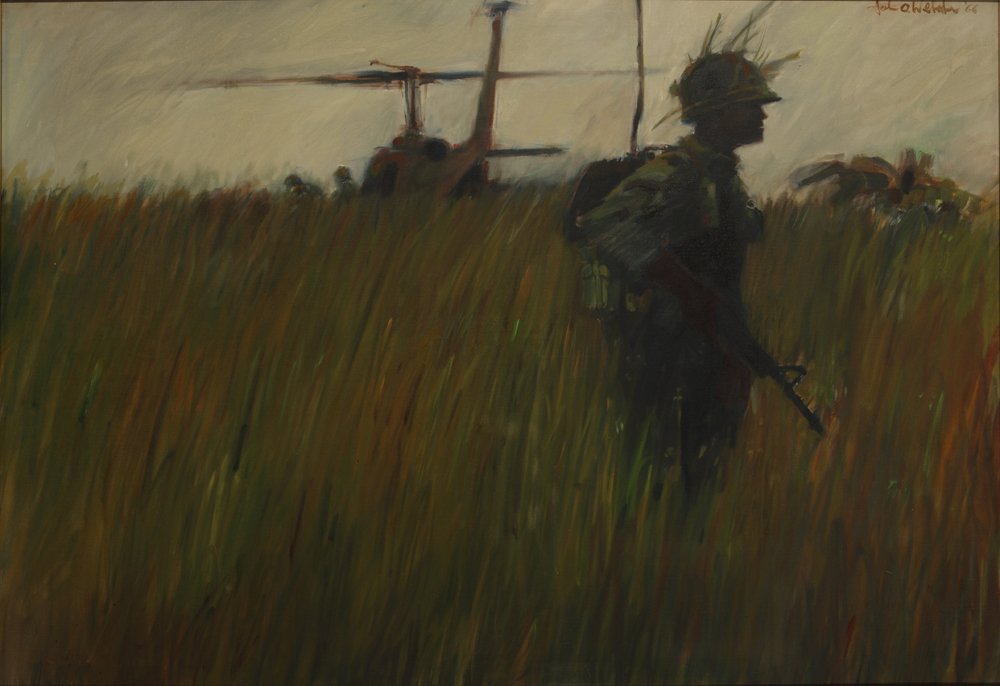
“Landing Zone” by John Wehrle, 1966. Center of Military History
How to register:
We offer two field trip scheduling options:
- Select a field trip from the Museum’s public event schedule
- Request to schedule a field trip at a time that meets your group’s schedule
Audience: All audiences. Content appropriate for Grades 9-12.
Goal: Gain a greater appreciation for the commitments and sacrifices of Vietnam Soldiers.
Program Description:
Culture binds people together. Formed from common values, beliefs, experiences, languages and customs, culture creates a shared sense of purpose and collective identity among groups of people. It can be seen in writing, religion, entertainment, clothing, food and activities of different groups.
The U.S. Army has its own culture based on the Army values, esprit de corps and the mission. While each Soldier’s experience is unique to their service, culture binds them together. During the Vietnam War, Soldier culture was formed by the clothing Soldiers wore, the food they ate, the entertainment they consumed and their shared experiences.
Through an examination of artifacts, film, and primary sources, gain additional insight into the commitments and sacrifices of Vietnam-era Soldiers and explore how these items contributed to a Soldier culture unique to this conflict.
Objective: At the end of this lesson students, will be able to
- Understand that culture exists between different groups.
- Identify the ways that Soldiers created their own culture during Vietnam.
- Recognize the challenges and commitments of Vietnam Soldiers.
Guiding Questions:
What does culture tell us about the Soldier experience?
Curriculum Connections
Common Core Standards
- CCSS.ELA-LITERACY.RH.6-8.2
Determine the central ideas or information of a primary or secondary source; provide an accurate summary of the source distinct from prior knowledge or opinions.
History and Social Science Standards of Learning for Virginia Public Schools
-
Virginia and United States History
-
VUS.15 The student will apply history and social science skills to analyze the United States’ foreign policy during the Cold War era by
- D) analyzing the changing role of the United States in Asia, including Korea, Vietnam, and China, and the experiences of refugees from those nations.
-
VUS.15 The student will apply history and social science skills to analyze the United States’ foreign policy during the Cold War era by
Your message has been submitted.
